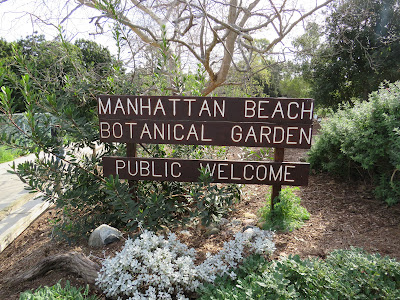Under sunny skies and temperatures in the low 60’s, we’re hiking along the edge of a pond in Pollywog Park where Coots, Mallards and Geese swim about while several Western Painted turtles collectively face the morning sun. After ascending a grassy slope, we follow a paved path into a botanical garden where yellow blossoms of Goldenbush and Suncup are on display. Soon, I come upon a Monarch butterfly feeding on a blossom of Purple Sage. On the same plant, I watch a honeybee feeding while on a nearby blossom of Mountain Lilac, a bumblebee feeds. Honeybees make lots of honey—enough for beekeepers to take the excess from the hive for human consumption. Bumblebees make little honey but are known for their loud buzzing and the way they “bumble” around, slowly pollinating flower after flower. Honeybees are more cooperative, communicating with one another. Bumblebees are independent. They usually create their nests in burrows underground, while honeybees nest above ground, often elevated to help keep out predators. Moving along, I first pause by some dense shrubbery to look at and listen to a family of White-crowned Sparrows and then I come upon a Hutton’s Vireo, a bird that I’ve only heard but have never seen until now, as it bathes in a small creek. Suddenly, a 4-inch Western Fence Lizard runs along and stops to warm itself on a rock. These diurnal reptiles lead a solitary life. They protect themselves by employing their fast reflexes, including biting and defecating on the predator. For thermoregulation they can change color from grey to tan to black. Up ahead, I pause to notice an adult Harlequin bug (black and orange checkered) and a mostly-black instar resting on a Pitcher Sage plant. The adult is named for its unique coloration and pattern like the masked and costumed jester of old (stock photo). As a member of the stink bug family, it produce odors as a defense mechanism against predators. Considered an invasive species, it migrated from Mexico and Central America after the Civil War. As an agricultural pest, it consumes cabbage, kale, broccoli and mustard greens. If left unchecked, this pest can cause entire field crops to wilt and die. After taking a short break, we turn around where I spot orange blossoms of California Poppy and red blossoms of Hummingbird Sage. Heading back toward the car, I stop at a bird feeder to see an English Sparrow eating seeds while a House Finch looks on.
Fly o’er the surf
Seagull soar
Walk the sand
Prance the shore
Sing with the Sandpiper
Ride the ocean breeze
Dive for a Herring
Swim the rolling seas
Creature of the coast
Worthy of praise
Bird of the beach
I admire your ways
D. DeGraaf



